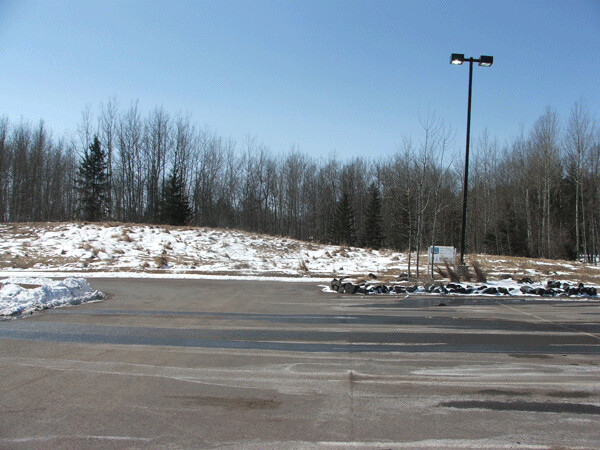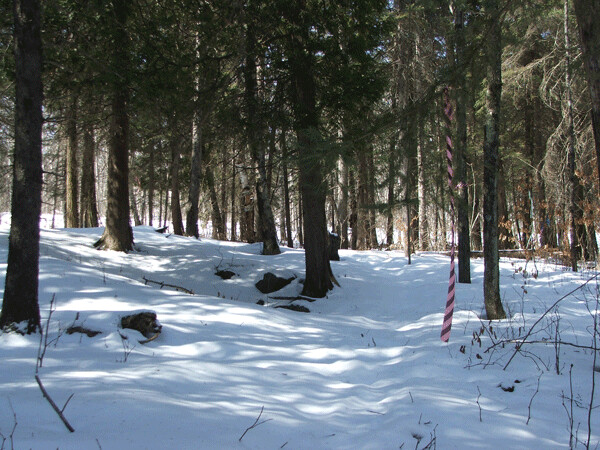News & Articles
Browse all content by date.


When Mayor Don Ness established the “half-and-half” tourism tax in 2014, intended for recreation projects in the St. Louis River Corridor, one of the first projects that got people excited about was a new Nordic Center at Spirit Mountain.
Currently, Spirit Mountain has 20 kilometers of Nordic skiing trails at the top of the hill, which are groomed and maintained by the Duluth Cross-Country Ski Club (DXC). As originally envisioned by Ness and the DXC, the Nordic Center would add three new cross-country skiing loops in the woods at the bottom of the hill, totaling 3.3 km in length, all of which would be serviced by lighting and snowmaking. A 1.7 km connector trail, not serviced by snowmaking or lights, would be built up the hillside to join the trails at the top.
Initially, the project was intended to be completed in two phases: Phase One would build the loops at the bottom, and Phase Two would build the connector trail. In 2015, the city and their consultant estimated that Phase One would cost $1.5 million, a number they published in a mini-master plan and conveyed verbally to various city bodies when pitching the project. Of that amount, $1 million would come from the half-and-half tax, $250,000 from a state grant, and $250,000 would be fundraised by DXC.
Unfortunately, the estimate was much too low. When the city put Phase One out for bid in March of 2018, nine companies reviewed the project and only two bid on it. The low bid for Phase One — parking lot, 3.3 km of trails, snowmaking and lights — came in at $3.2 million, more than double the city’s original estimate. The second bid was over $5 million.
Currently, this money is not available. The amount that the city has in hand from all sources—half-and-half tax, DXC fundraising and grants, minus money that has already been spent—comes to about $1.6 million.
As such, the city has decided to complete work on the Nordic Center in several phases. According to Construction Project Supervisor Mike LeBeau, who is overseeing the project for the city, “We set the bidding up so it was itemized, so we’ve got line-item costs for a whole bunch of components that we can look at and make decisions about [whether to do them now or later].” Since the bids came in, the city has been studying different components of the project and “just recombining them in different orders so as to [stay within budget and] get a project off the ground in 2018,” LeBeau said.
This process is ongoing, and not yet finalized. LeBeau cautioned me that the things he was telling me might not be the last word on the subject. With that in mind, the reduced project that LeBeau described to me on March 30 was as follows: Two loops of trail would be built instead of three. Pipes and wiring would be installed on both loops, but lighting and snowmaking would only be activated on one loop, with lighting and snowmaking for the second loop deferred to a future phase of construction. Construction of the third loop would also be deferred to the future, as would the connector trail.
DXC remains excited about the Nordic Center, even in its abbreviated form. When I spoke with DXC President Annalisa Peterson on April 2, she told me that having even a single loop of trail with snowmaking capability would be a benefit. “When there’s not natural snow, having snow on the additional loop of trail is going to be better than anyone else has anywhere [in the area] … It’s kind of the only option … Duluth will have an amazing resource, and something that’s usable next fall. That was really the goal, to really provide something to the public [this year], as opposed to just putting it off forever.”
DXC has been extremely productive and engaged in the process, raising more than $500,000 for the project in two years. Peterson said they intended to continue their ambitious fundraising, because they were very interested in seeing a whole, complete project get done. “I think the problem would be if we just built this [phase of the project], and there was no plan to get the rest of it done. That wouldn’t really be a good use of funds or time.”
When I spoke with Jim Filby Williams, the city’s Director of Public Administration, he agreed. “The intent is to put together a Phase One that [is] sufficient unto itself in Year One to be a viable Nordic skiing operation, and position us to secure grant support that would enable us to entirely complete the project soon thereafter. And so, presuming that we move forward as intended, this Phase One would be open for Winter ‘18-’19. We’re submitting … three grant requests for Phase Two this year, two of which have already been authorized and submitted … and those funds would be available next year to enable us to complete the remaining work by Winter ‘19-‘20. Grants are obviously uncertain propositions, but we feel confident that this is a highly competitive project.”
According to LeBeau, “If all goes well, which is always an unknown, you know, if all the permits fall into place … we could be starting trail clearing pretty early this spring.”
An inside track?
One grant source that the city hopes to tap for the Nordic Center is Minnesota’s Legacy fund. Established by popular vote in 2008, the Legacy fund collects a 3/8 percent state sales tax and uses the money to fund artistic, cultural and environmental projects around the state. A portion of the money is reserved for parks and trails.
In 2013, the Minnesota Legislature formed the Greater Minnesota Regional Parks and Trails Commission to vet proposals for Legacy funding that originated outside the Twin Cities metro area. To be considered for Legacy money, a trail must first be designated as “regionally significant” by the GMRPTC.
As it happens, the executive director of the GMRPTC is Renee Mattson. My regular readers will recognize that name. Mattson was executive director of Spirit Mountain from 2005 to 2014. She is responsible for setting Spirit Mountain’s master plan into motion into 2008, which resulted in all the improvements that we see today: the Adventure Park, the Grand Avenue Chalet, the water line, now the proposed Nordic Center. Spirit Mountain’s deep and ever-growing reliance on city subsidies is directly traceable to Mattson.
So now the city will be applying to Mattson’s current organization for money to support Mattson’s old organization. Do you think we’ll get it?
Commission sadness
On Feb. 14, 2018, after hours of discussion and public testimony, the Duluth Parks Commission voted 6-4 to reject the administration’s plan to build a paddle center on the St. Louis River, below Spirit Mountain. Two days later, commissioners were given a rude slap in the face when Mayor Emily Larson announced that she intended to ignore their vote and bring the project to the City Council anyway. Ten days after that, the City Council voted 7-2 to approve it. So that was pretty slick, wasn’t it?
At their March 14 meeting, Parks commissioners spent some time discussing the matter.
Commissioner Dudley Edmondson said, “I just feel like there needs to be a mechanism in place for when this kind of thing happens, that the Park Commission and the city councilors have some meeting to try to determine why. … I think there needs to be something in place where it doesn’t just go to them and then they vote on it and it’s done. Because, to me, that’s very disrespectful to the citizens that come … to all of our meetings, and spend time going through things. It’s also disrespectful, I think, to all the commissioners that are here.”
“I’m working really hard at phrasing this in a way that does not appear to be confrontational,” said Commissioner John Schmidt, “but I would like to know, right from the start, as soon as we start talking about [something], what the bottom line with the city is … If the mayor knows that this is a project that is going to go through no matter what, I would like to know that right from the beginning. … I want to know directly, I want to know right away, what input you want and what input will be respected. With the turnaround period with regard to [the City Council’s] vote … it was obvious that the decision had [already] been made.”
“We just want a level of respect for what we do, and also a level of respect for all these people that come in this room every month and have something to say,” said Edmondson. “The city just didn’t seem to care about what the citizens said and what the commission said. … Two days after our vote, the mayor says, ‘We’re for it!’ and … the City Council approves it. So it’s like, wait, why was I there? What did I do? … All the things I said are irrelevant? This makes no sense to me, and I feel like we need a better definition of exactly what it is we’re here to do.”
Commissioner Britt Rohrbaugh said, “We all … put so much time and effort … into this, and there was very little curiosity on the side of the city as to what happened. … I spoke with one city councilor who called me, and then one who emailed me three weeks later, and that was it. … I was shocked that there was very little curiosity.”
I sympathized with the commissioners. Clearly, the city had been taking the Parks Commission’s vote for granted, assuming they would approve the plan because the city wanted them to. (A fair assumption: The Parks Commission usually does approve city proposals.) The city would then present their recommendation to the City Council as evidence of broad support for the project. But the Parks Commission’s surprise No vote derailed the whole plan. The mayor was still counting on a Feb. 26 City Council vote, so she had no choice but to ram the project through.
It’s not often that the city wields its power so openly, but they evidently thought this project was important enough that they had no other choice. The city has wanted to build a park at that location on the St. Louis River for years. The idea originated with developers years before that. The truth is that the mayor would have been more likely to flap her arms and fly than let any commissioners delay this particular project.
As Commissioner Schmidt pointed out, however, the respectful thing to do would have been for the administration to advise the Parks Commission of this beforehand, rather than letting the charade play out and wasting everybody’s time. If you’re going to play games with people, the least you can do is tell them the rules.
| Tweet |

